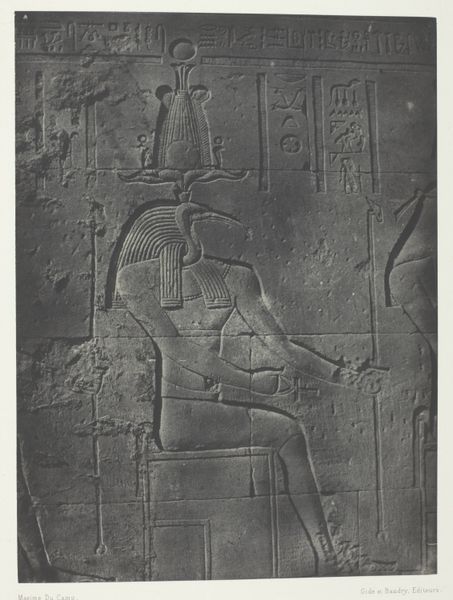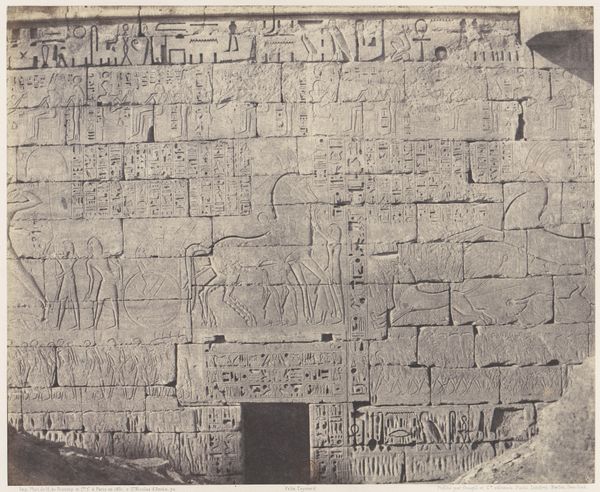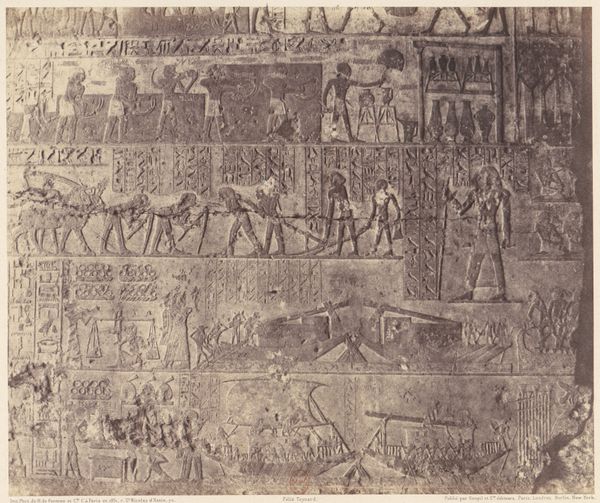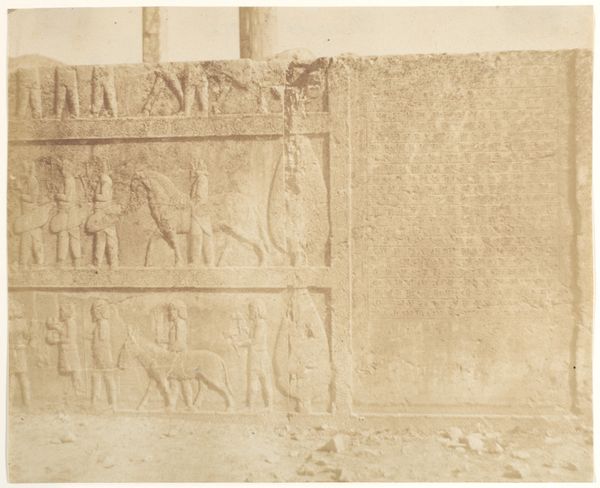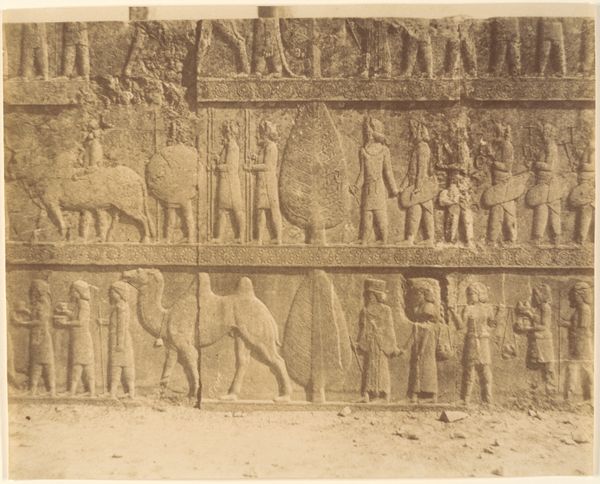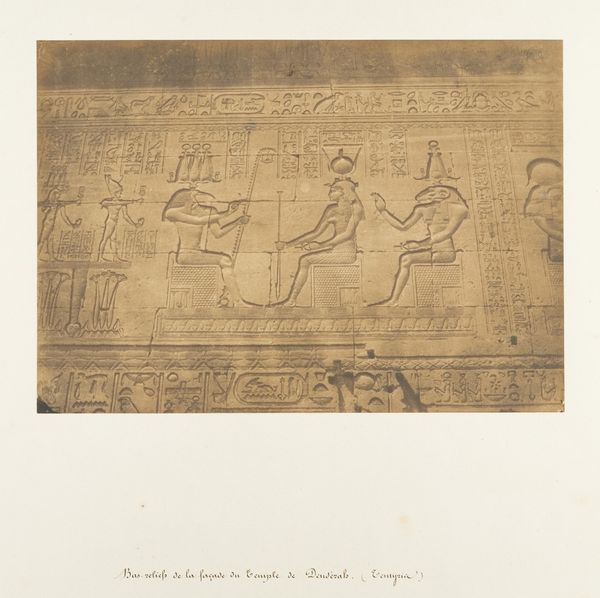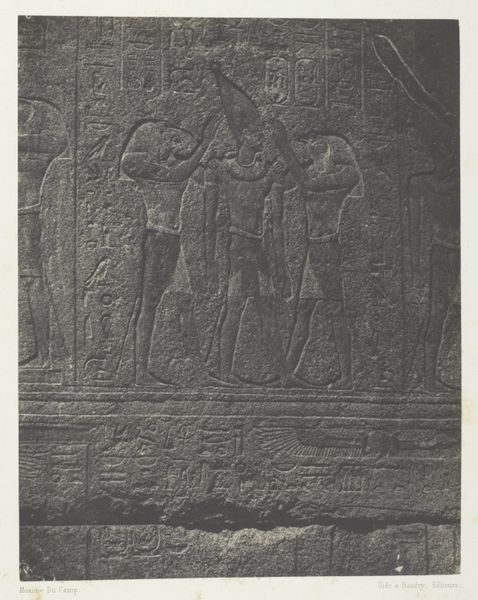
Karnak (Thèbes), Enciente du Palais - Détailes de Sculptures au Point N 1851 - 1852
0:00
0:00
relief, photography
#
relief
#
landscape
#
ancient-egyptian-art
#
photography
#
ancient-mediterranean
Dimensions: 24.2 x 30.1 cm. (9 1/2 x 11 7/8 in.)
Copyright: Public Domain
Editor: This photograph by Félix Teynard, taken between 1851 and 1852, captures a section of sculpted wall at the Karnak temple complex in Thebes. It's incredible to see the detail preserved in this image! What strikes me is how the relief seems both ancient and strikingly modern due to the sharp shadows. What do you see in this piece, beyond the aesthetic appeal? Curator: This photograph allows us to consider the materials and labor involved in both the creation of the original relief and the subsequent photographic documentation. The stone itself speaks of the society that quarried, carved, and erected it. Teynard's photographic process—likely involving paper negatives and albumen prints—adds another layer of materiality. How do you think the act of photographing this relief altered its meaning and accessibility? Editor: I hadn't considered that! It's easy to focus on the artistic intent of the relief, but the photograph brings in a whole new means of production. The ability to disseminate images like this to a wider audience, well, it definitely democratizes art. Do you think this also changes the *value* of the object itself? Curator: Precisely. The value shifts from solely being a sacred object or royal declaration, accessible to a select few, to becoming a historical and artistic artifact that could be studied and consumed by a European audience, influencing everything from academic scholarship to interior design. Think of the resources needed to travel and create those photos at that time! Editor: It's fascinating to think about how both the original relief and the photograph are products of their own material and social contexts. Curator: Exactly! We begin to unravel the layers of labor and consumption embedded within the image. Looking closely at its texture reveals processes, ideas, and values that are very relevant still today.
Comments
No comments
Be the first to comment and join the conversation on the ultimate creative platform.



